India is a country that is incredibly rich in culture, history, and traditions, and the national symbols of India play a significant role in representing the core values and heritage of this beautiful nation. These symbols are not only vital to India’s identity but also serve as an exciting and inspiring way for kids to learn about the country’s rich past and vibrant present. The national symbols of India embody the spirit of the nation, and each one carries its own unique story, making them both historic and fascinating.
- National Animal: The Royal Bengal Tiger
- National Anthem: Jana Gana Mana
- National Aquatic Animal: The Dolphin
- National Bird: The Peacock
- National Calendar: The Saka Calendar
- National Cockade: Indian Cockade
- National Currency: The Indian Rupee
- National Flag Adoption Day: July 22
- National Emblem: The State Emblem of India
- National Flag: The Tricolor
- National Flower: The Lotus
- National Fruit: The Mango
- National Heritage Animal: The Indian Elephant
- National Music Instrument: The Veena
- National Pledge: The Oath of Allegiance
- National Reptile: The King Cobra
- National River: The Ganga
- National Song: Vande Mataram
- National Motto: Satyameva Jayate
- National Tree: The Banyan Tree
- National Vegetable: The Pumpkin
From the majestic Royal Bengal Tiger, which symbolizes India’s strength, to the vibrant Tricolor Flag, which reflects the unity and diversity of the country, the national symbols of India are a treasure trove of interesting facts and deep significance. These symbols tell the story of India’s rich heritage, its journey through time, and its commitment to progress and unity.
The national symbols of India also have a magical appeal for children, offering an adventure through history and culture. Each symbol, whether it’s the beautiful Peacock, India’s national bird, or the sacred Ganga, the national river, holds a special place in the hearts of Indians. These symbols bring to life the colors, sounds, and traditions of India, making it easy and exciting for kids to learn about their heritage.
Read more: Good Habits and Bad Habits for Kids 2025: Fun Guide to Healthy Life
So, let’s embark on an incredible journey and explore the national symbols of India—each one offering a glimpse into the country’s past, its diverse culture, and its strong, beautiful identity. The national symbols of India are waiting to inspire and educate children about the country’s rich and magical history!
National Animal: The Royal Bengal Tiger
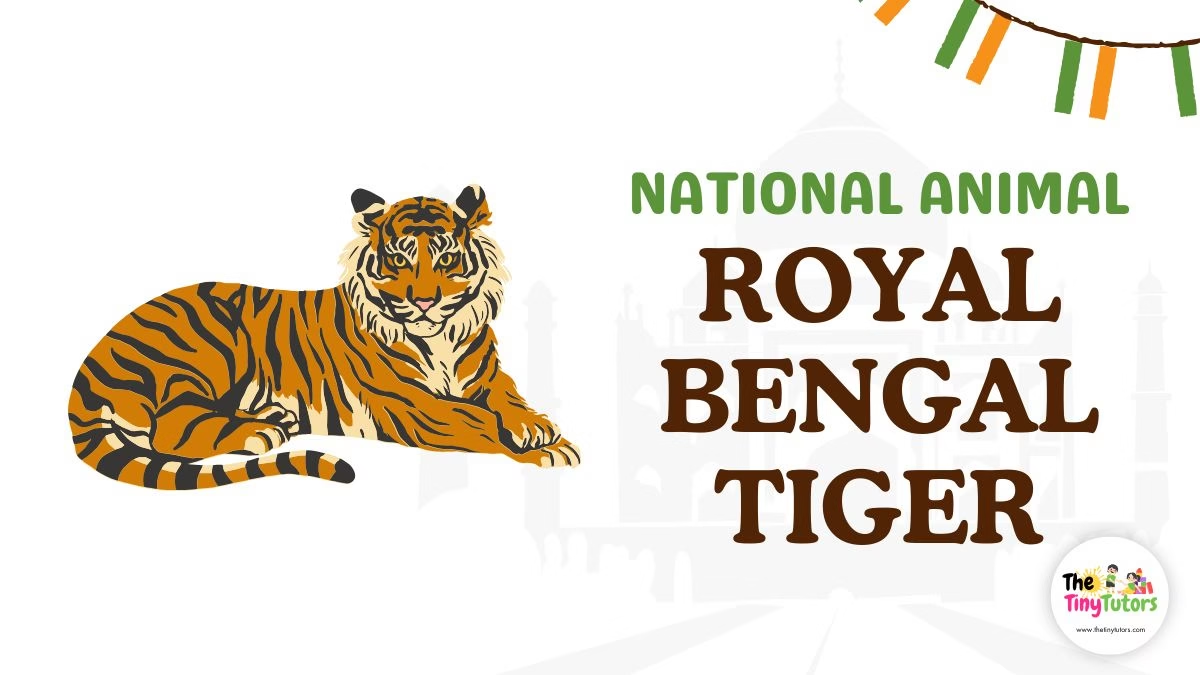
Description: The National Symbols of India
The Royal Bengal Tiger is one of the most majestic creatures found in India. It is recognized as the national animal of India and symbolizes strength, power, and courage. These tigers are known for their beautiful orange coats with black stripes, and they roam freely in the wild forests of India.
What It Means for Us:
The Royal Bengal Tiger is not just an animal; it represents the strong and fearless spirit of India. As India’s national animal, it also emphasizes the importance of wildlife protection and the preservation of our forests.
Fun Fact:
The National Symbols of India represent the country’s rich cultural heritage and history. These symbols include the Ashoka Chakra, the Indian flag, the national anthem, the national animal (the Bengal tiger), the national bird (the peacock), and many others. They embody India’s unity, diversity, and pride.
National Anthem: Jana Gana Mana
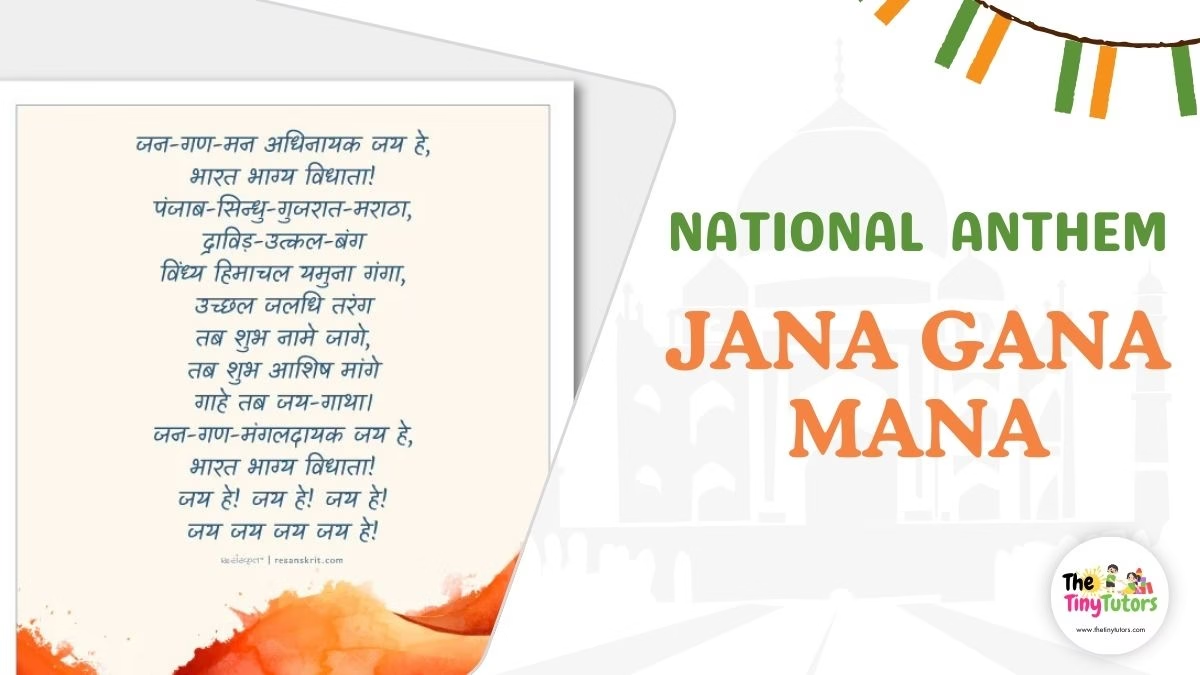
Description: The National Symbols of India
Jana Gana Mana is India’s national anthem. It was written by Rabindranath Tagore, a famous poet, and singer. The anthem is inspiring and celebrates the unity of India’s diverse cultures, languages, and people.
What It Means for Us:
The national anthem of India is sung with respect and pride during national events, ceremonies, and in schools. It symbolizes India’s unity and commitment to peace.
Fun Fact:
The National Symbols of India, including the national anthem “Jana Gana Mana,” play a vital role in uniting the country. Every time the anthem is sung, it brings millions together, fostering a deep sense of national pride and togetherness, highlighting India’s diverse culture and unity.
National Aquatic Animal: The Dolphin

Description: The National Symbols of India
The dolphin is India’s national aquatic animal, known for its playful nature and intelligence. Dolphins can be found in the beautiful waters of the Ganges River and other water bodies in India.
What It Means for Us:
The dolphin symbolizes India’s rich marine life and the importance of protecting aquatic ecosystems. It is a lovely creature that reminds us of the need to conserve our rivers and seas.
Fun Fact:
Dolphins are incredible swimmers, renowned for their grace and speed in the water. They use a range of sounds, such as clicks and whistles, to communicate with one another. Known for their playful nature, dolphins are among the most fun-loving creatures in the ocean!
National Bird: The Peacock
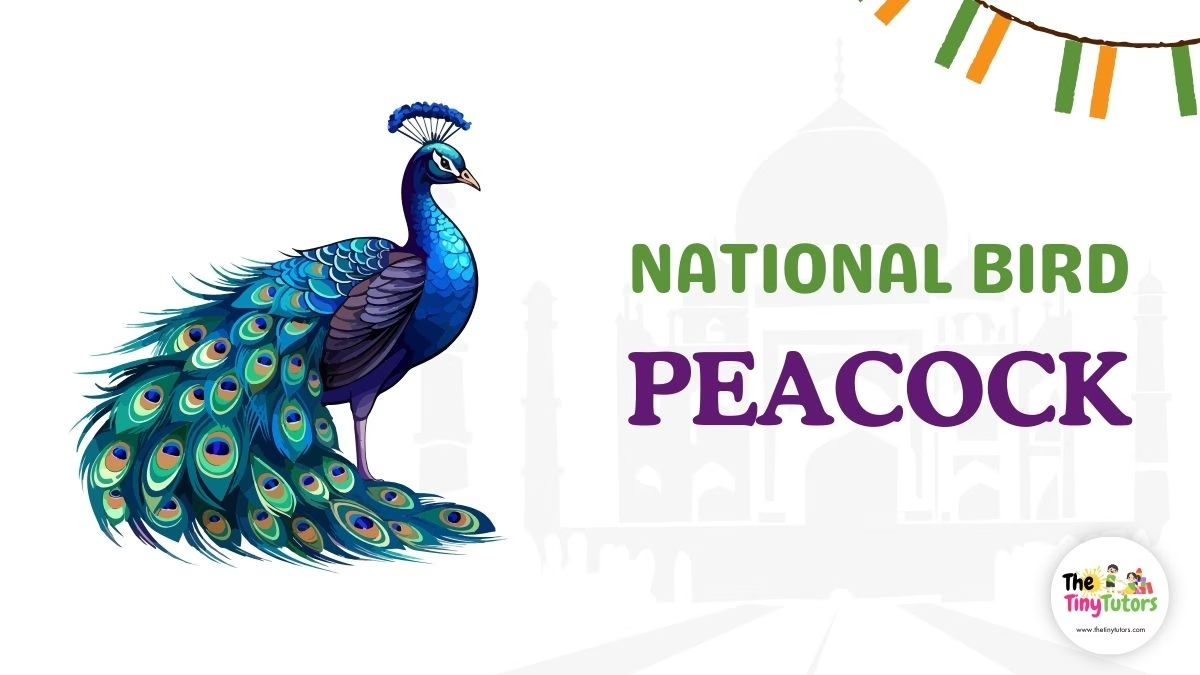
Description: The National Symbols of India
The peacock is India’s national bird and is known for its vibrant, colorful feathers. This bird is beautiful and can be seen dancing in the rain, spreading its feathers like a big, colorful fan.
What It Means for Us:
The peacock symbolizes the beauty and diversity of India. Its colorful feathers represent the country’s rich culture, and its playful nature is adored by children.
Fun Fact:
Did you know the peacock is also associated with the monsoon season in India? Its dance is said to bring rain, making it a magical bird in Indian folklore!
National Calendar: The Saka Calendar
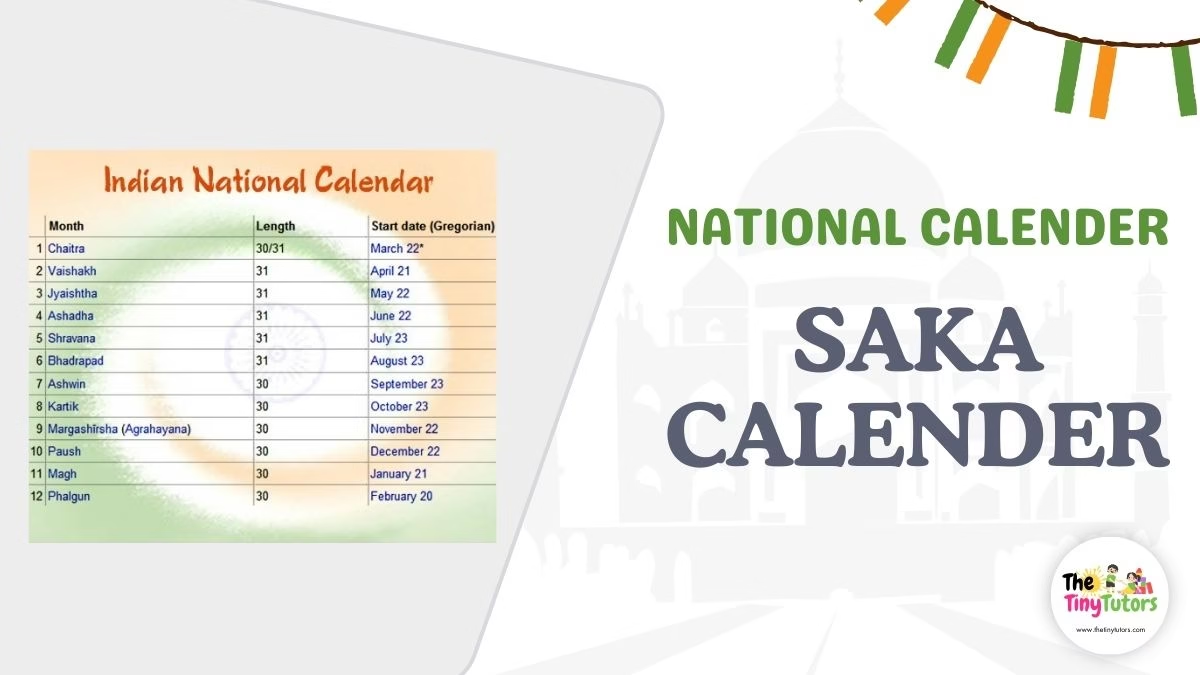
Description: The National Symbols of India
The Saka Calendar is India’s official national calendar. It is based on the solar year and is used in the country for official purposes.
What It Means for Us:
The Saka calendar helps keep track of important events and festivals in India. It’s ancient, and understanding it connects us with India’s rich historical traditions.
Fun Fact:
The National Symbols of India are a representation of the nation’s vibrant culture and history. The National Flag, Anthem, Emblem, and Animal embody India’s strength, unity, and pride. These symbols honor the country’s diverse heritage and the resilience of its people.
National Cockade: Indian Cockade
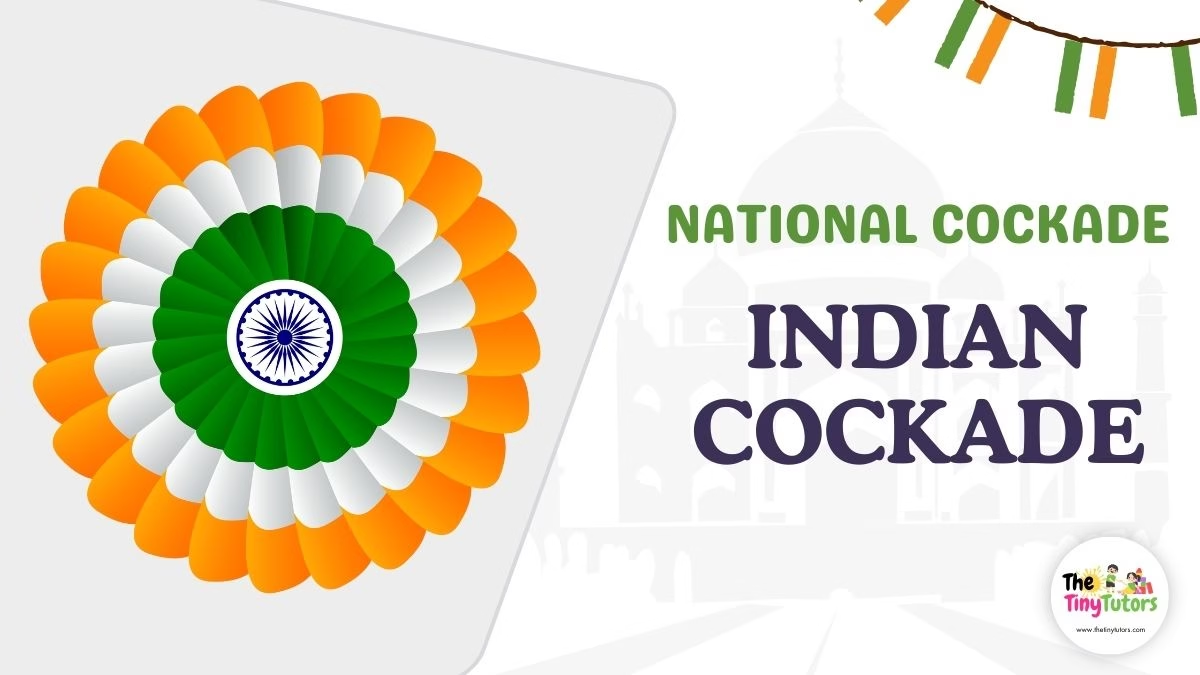
Description: The National Symbols of India
The Indian Cockade is a traditional ribbon worn by soldiers, representing India’s military strength and spirit.
What It Means for Us:
The Indian Cockade shows the unity and pride of the country, especially during national celebrations and military events.
Fun Fact:
The National Symbols of India are a powerful representation of the country’s heritage. Wearing the Indian Cockade makes soldiers feel heroic, as it symbolizes their pride and dedication to the nation. These symbols foster a deep sense of unity, reminding individuals of their significant contribution to India’s legacy.
National Currency: The Indian Rupee
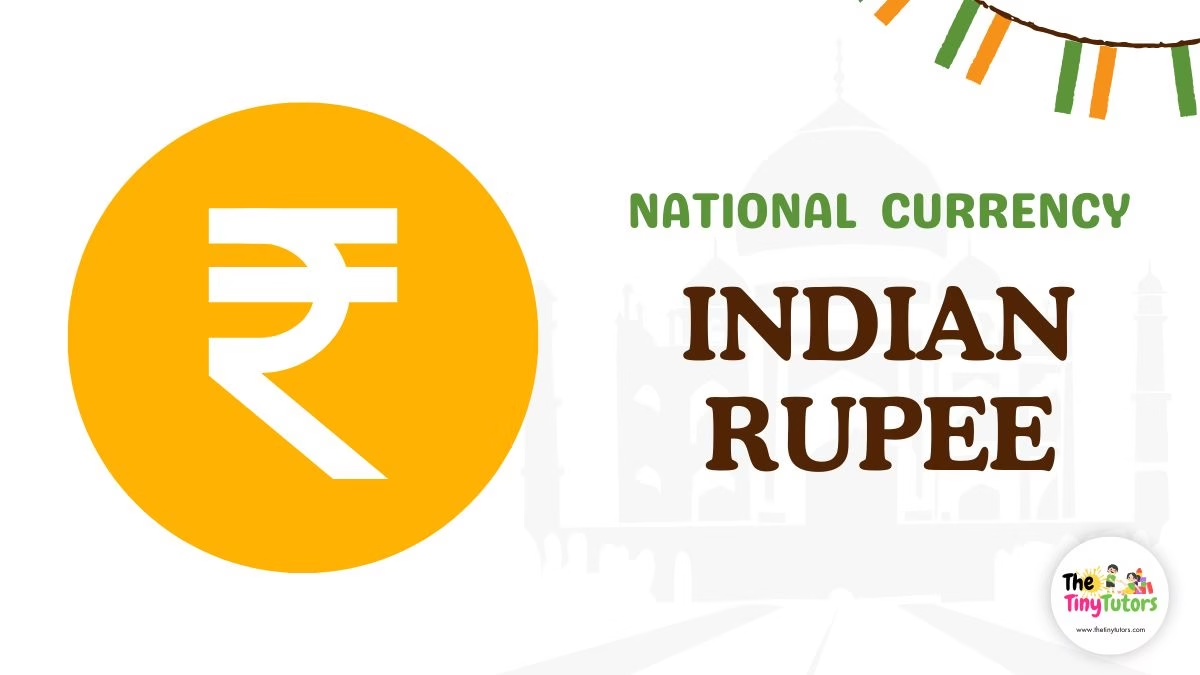
Description: The National Symbols of India
The Indian Rupee is the official currency of India and is used for all transactions in the country. It is represented by the symbol rupee.
What It Means for Us:
The Indian Rupee is a symbol of India’s economy and financial independence. It’s a unique currency used to buy goods and services.
Fun Fact:
The National Symbols of India represent the country’s deep cultural heritage and values. The ₹ symbol, designed by the talented Indian designer Udaya Kumar in 2010, stands for India’s economic strength. Combining traditional and modern design elements, it reflects the nation’s progress and global influence, while inspiring pride and unity among its people.
Visit our channel: National Symbols of America for Kids | Learn About USA’s National Anthem, Flag, and More!
National Flag Adoption Day: July 22
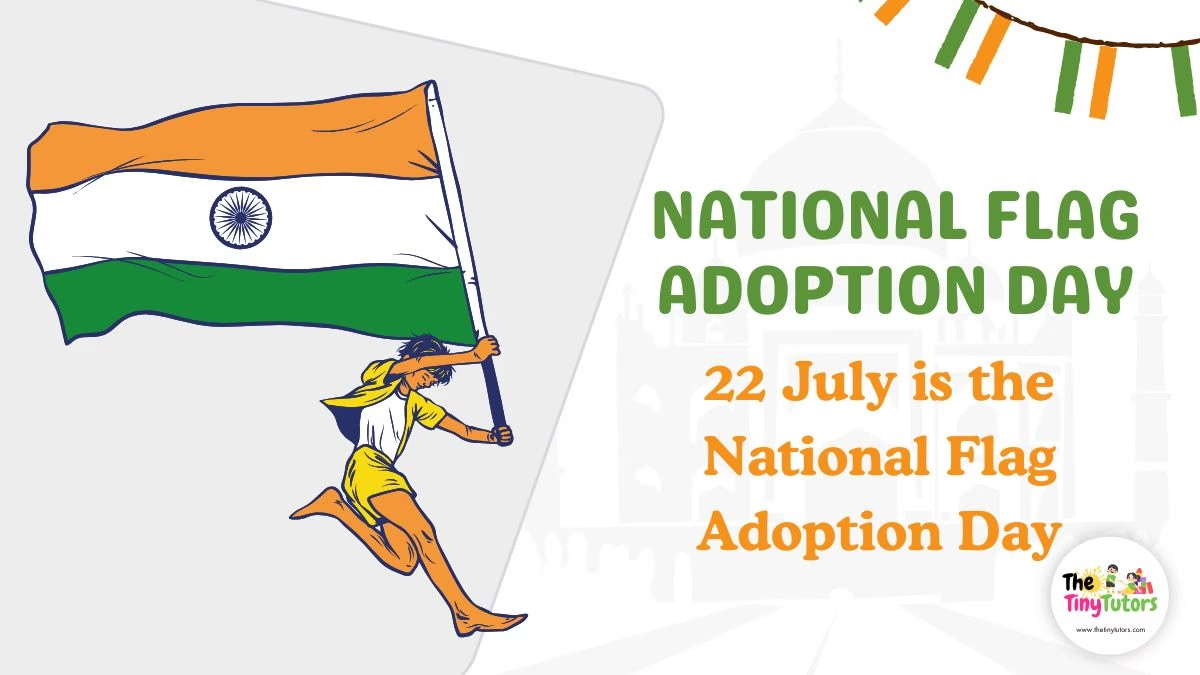
Description: The National Symbols of India
July 22 is celebrated as the National Flag Adoption Day, marking the day when the Tricolor flag was officially adopted in 1947.
What It Means for Us:
This day reminds us of the sacrifices made for India’s freedom and the colorful and historic significance of the national flag.
Fun Fact:
The National Flag Adoption Day is a magical moment in India’s history, as it marks the beginning of India’s independence and pride!
National Emblem: The State Emblem of India
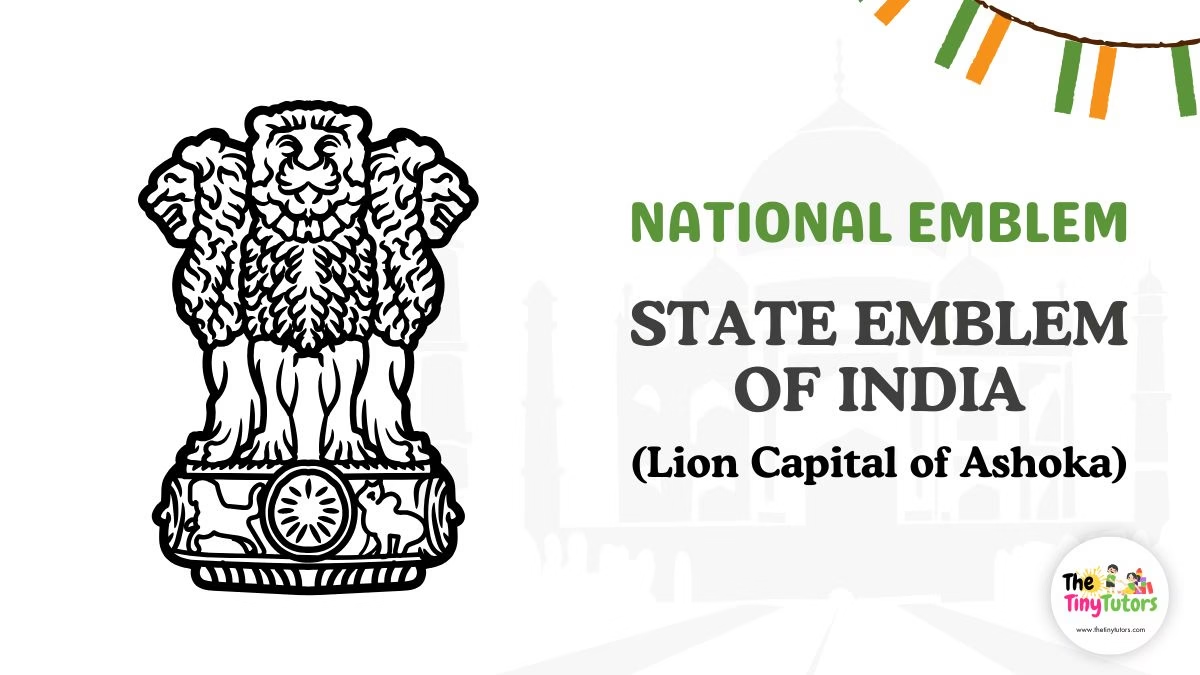
Description: The National Symbols of India
The State Emblem of India is a symbol of India’s sovereignty and national identity. It features a lion and a wheel (Ashoka Chakra), representing strength and progress.
What It Means for Us:
The National Emblem represents the unity, power, and courage of India. It’s used on official documents, government buildings, and coins.
Fun Fact:
The National Symbols of India embody the country’s identity and heritage. The Ashoka Chakra, seen on the national emblem, consists of 24 spokes, symbolizing India’s ongoing journey toward progress. These spokes reflect the nation’s commitment to growth, unity, and strength as it moves forward into the future.
National Flag: The Tricolor
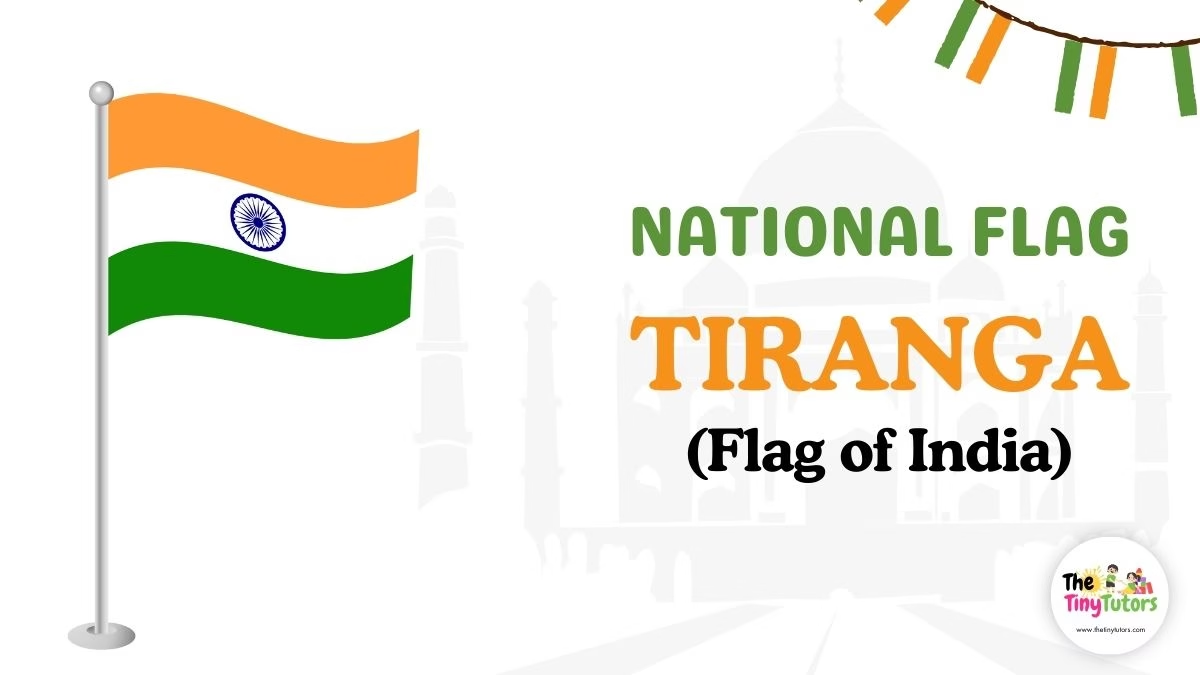
Description: The National Symbols of India
The Tricolor, or Tiranga, is India’s national flag and consists of three colors: saffron, white, and green, with the Ashoka Chakra in the center.
What It Means for Us:
The Tricolor represents the values of courage, peace, and prosperity. It’s vibrant and reminds us of our unity in diversity.
Fun Fact:
The National Symbols of India represent the nation’s pride and legacy. The Tricolor flag, hoisted during important national celebrations like Republic Day and Independence Day, is a strong symbol of India’s unity and freedom. It embodies the nation’s spirit, pride, and shared cultural heritage.
National Flower: The Lotus
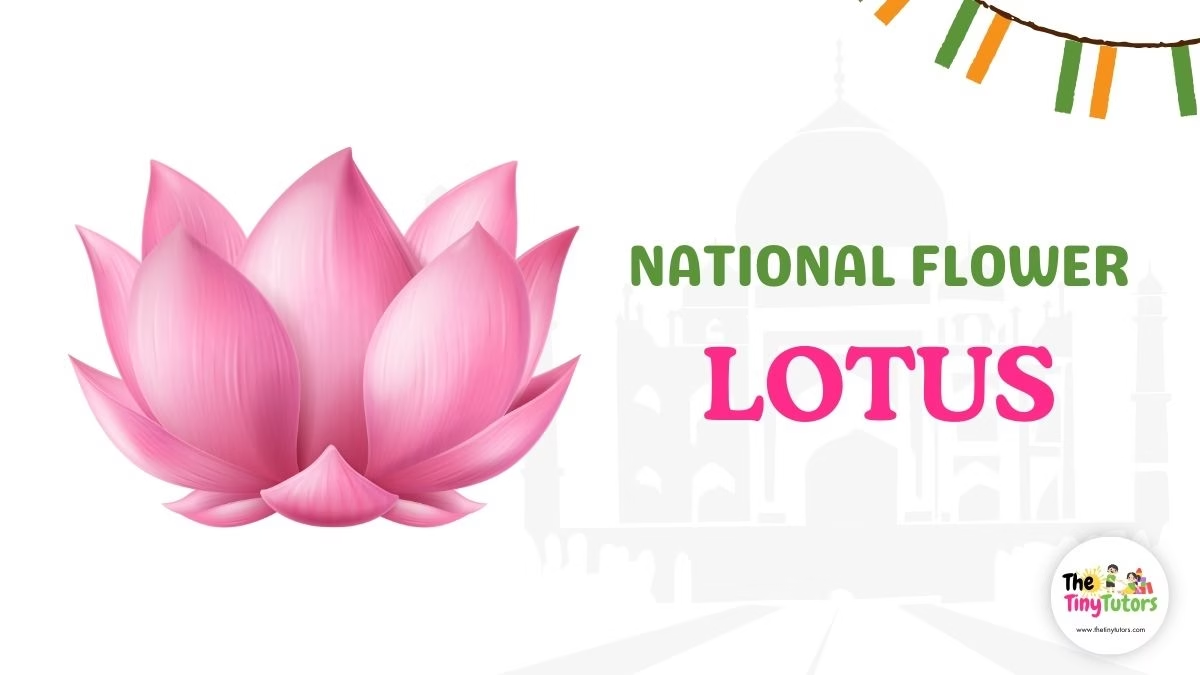
Description: The National Symbols of India
The lotus is India’s national flower and is considered a symbol of purity and beauty.
What It Means for Us:
The lotus grows in muddy waters but blooms into a beautiful flower, symbolizing the country’s resilience and strength.
Fun Fact:
The National Symbols of India hold deep significance, representing the nation’s heritage. The lotus, a symbol of purity and beauty, is also linked to many Indian gods and goddesses. Its magical spiritual importance makes it a powerful symbol in Indian culture, embodying the country’s divine and cultural essence.
National Fruit: The Mango
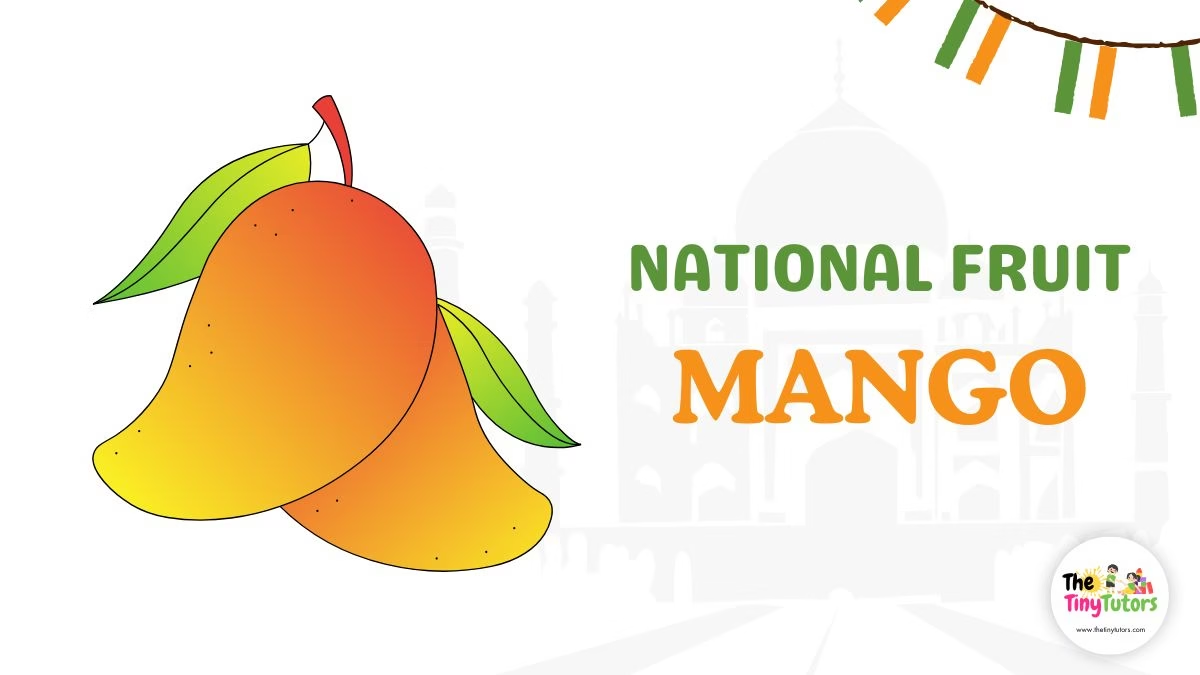
Description: The National Symbols of India
The mango is India’s national fruit and is loved by people of all ages for its sweetness and juiciness.
What It Means for Us:
The mango is not just a fruit but a symbol of the country’s agriculture and rich natural resources.
Fun Fact:
The National Symbols of India reflect the nation’s rich cultural heritage. The mango, one of the most beloved fruits in India, comes in over 1,000 varieties, making it the most exciting fruit to taste. Its diverse flavors and cultural importance make it a cherished symbol enjoyed during festivals and celebrations.
National Heritage Animal: The Indian Elephant
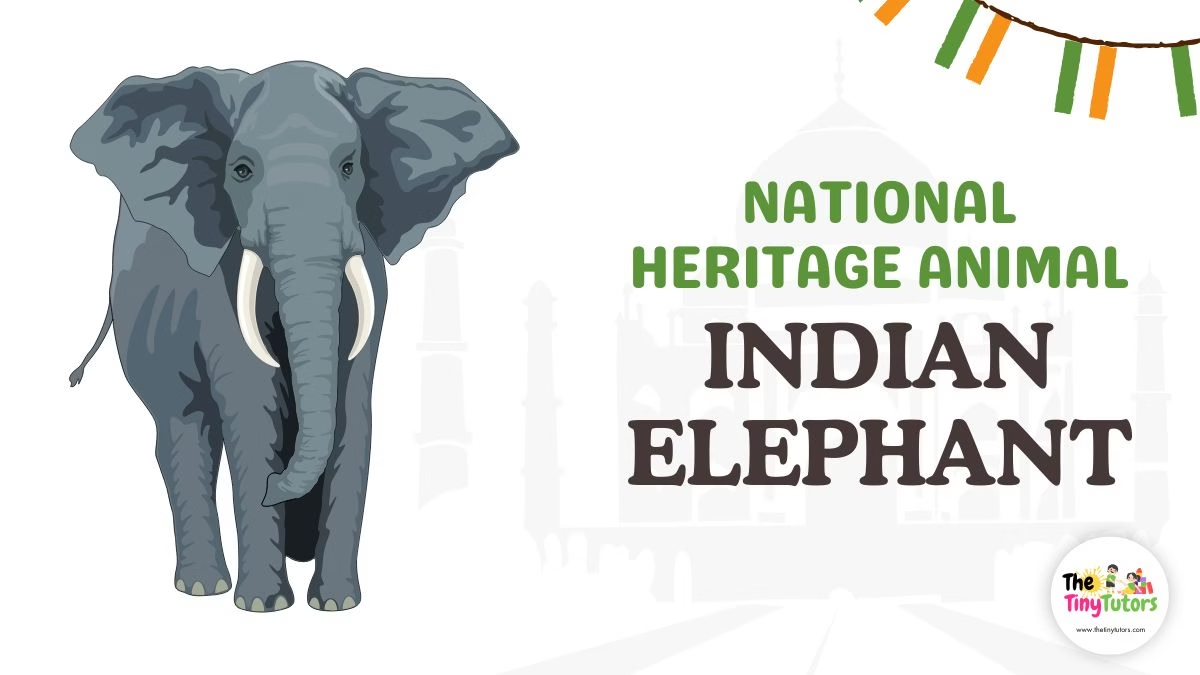
Description: The National Symbols of India
The Indian elephant is India’s national heritage animal, known for its strength, wisdom, and gentle nature.
What It Means for Us:
The Indian elephant symbolizes the country’s rich wildlife and cultural heritage, especially in festivals and religious rituals.
Fun Fact:
The National Symbols of India, including the Indian elephant, symbolize the country’s grandeur and strength. The Indian elephant, living up to 60 years in the wild, is one of India’s most majestic animals. Its presence in India’s heritage reflects the nation’s pride, cultural significance, and the unity fostered by these powerful symbols of sovereignty.
National Music Instrument: The Veena

Description: The National Symbols of India
The Veena is India’s national music instrument and is associated with Indian classical music.
What It Means for Us:
The Veena represents India’s rich musical heritage and is a symbol of creativity and cultural expression.
Fun Fact:
The National Symbols of India, like the Veena, reflect the nation’s cultural heritage. Associated with Goddess Saraswati, the Veena represents knowledge and wisdom. These symbols, deeply rooted in India’s traditions, inspire unity and pride, embodying the nation’s commitment to education, enlightenment, and reverence for its rich cultural legacy.
National Pledge: The Oath of Allegiance
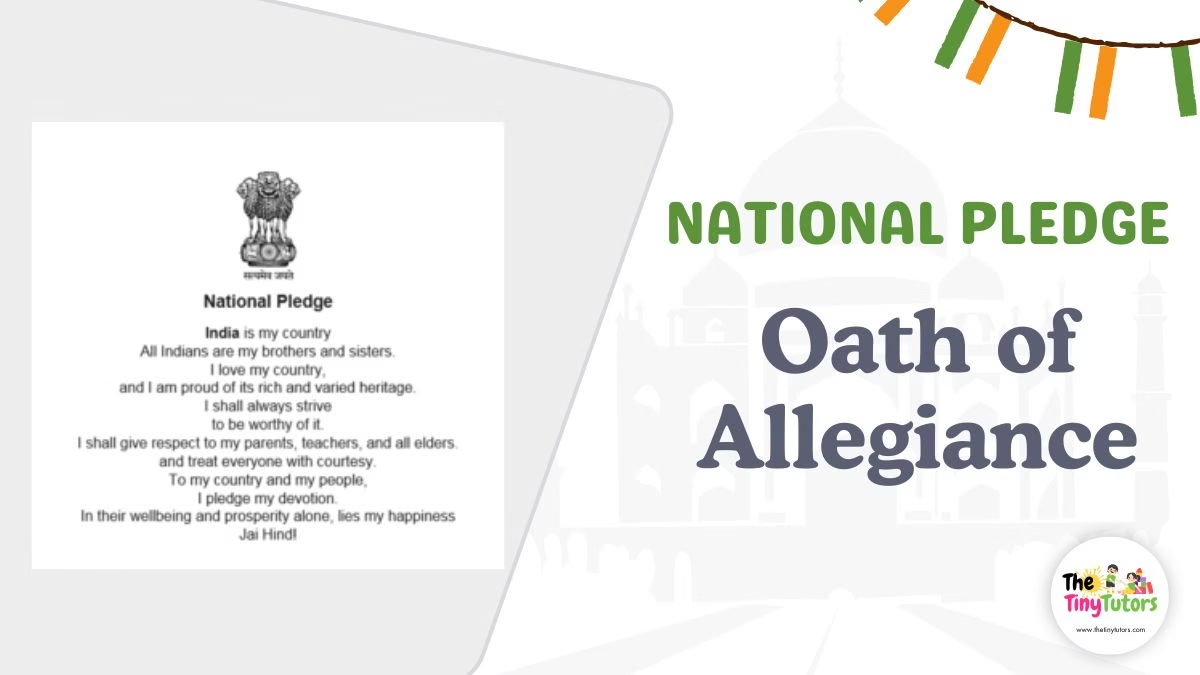
Description: The National Symbols of India
The National Pledge is a declaration of loyalty to the nation, and it’s often recited by children in schools.
What It Means for Us:
The National Pledge teaches the values of unity, discipline, and respect for the country, making it an essential part of India’s culture.
Fun Fact:
The National Symbols of India, including the pledge, national flag, anthem, and emblem, embody the country’s values, unity, and heritage, fostering patriotism and a collective commitment to the nation’s growth and well-being. Reciting the National Pledge makes kids feel proud of their country and ready to contribute to its progress!
National Reptile: The King Cobra
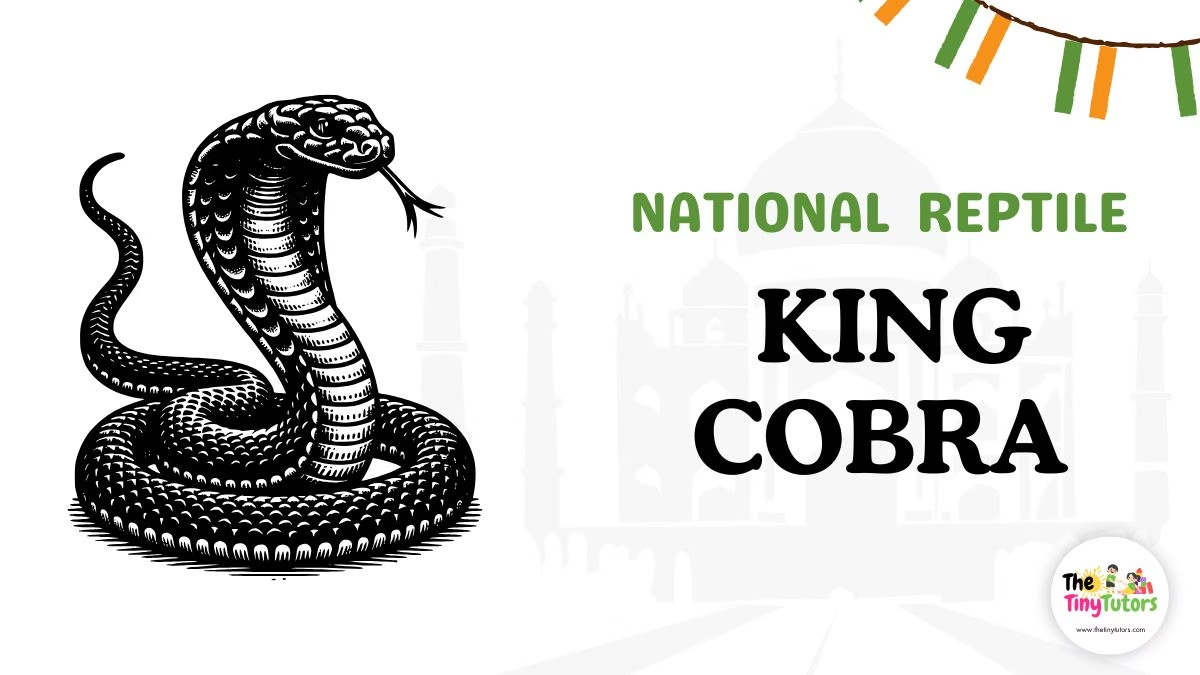
Description: The National Symbols of India
The King Cobra is India’s national reptile and is the longest venomous snake in the world.
What It Means for Us:
The King Cobra is a symbol of India’s wild heritage and reminds us to respect nature and its creatures.
Fun Fact:
The National Symbols of India, like the King Cobra, embody the nation’s strength and majesty. The King Cobra, capable of raising its head to a third of its body length, symbolizes power and agility, much like India’s rich cultural heritage and unity, as reflected in its iconic symbols. The King Cobra can stand up and raise its head to about 1/3 of its body length – how cool is that?
National River: The Ganga
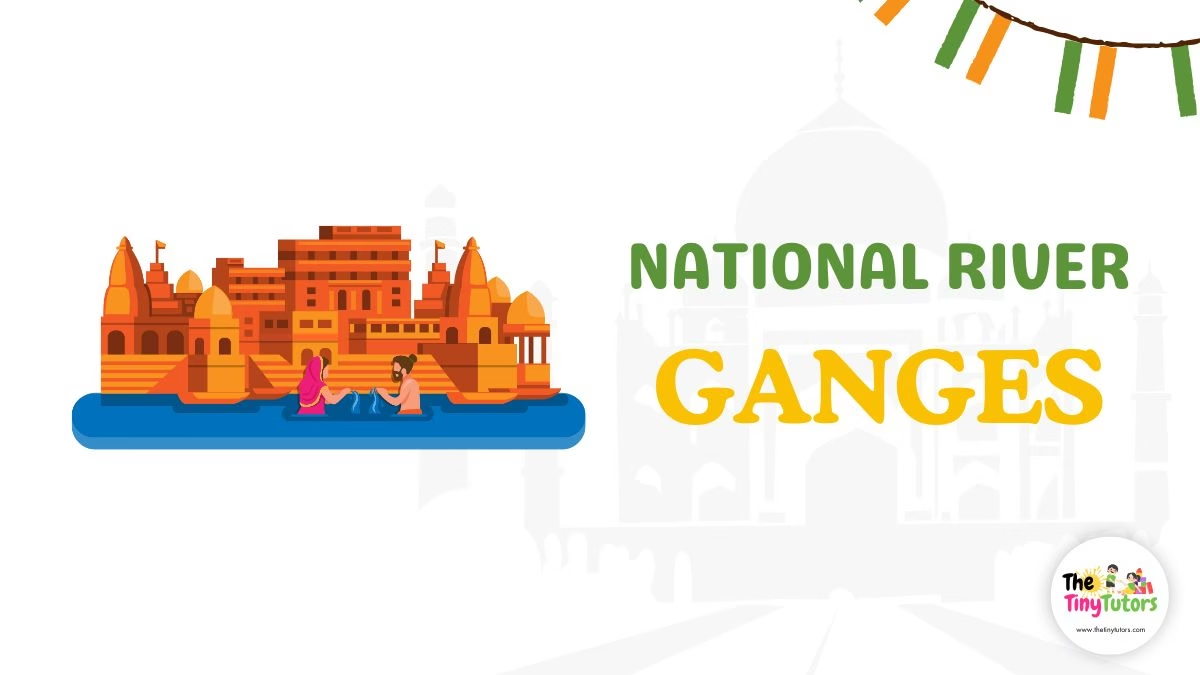
Description: The National Symbols of India
The Ganga is India’s national river and is considered the most sacred river in India.
What It Means for Us:
The Ganga symbolizes purity, life, and spiritual growth, making it a magical river for millions of people in India.
Fun Fact:
The National Symbols of India, such as the Ganga, which flows over 2,500 kilometers, nurture the lands it traverses. The Ganga, symbolizing purity, along with other icons like the national flag and anthem, fosters unity and represents India’s rich heritage, sovereignty, and collective spirit.
National Song: Vande Mataram
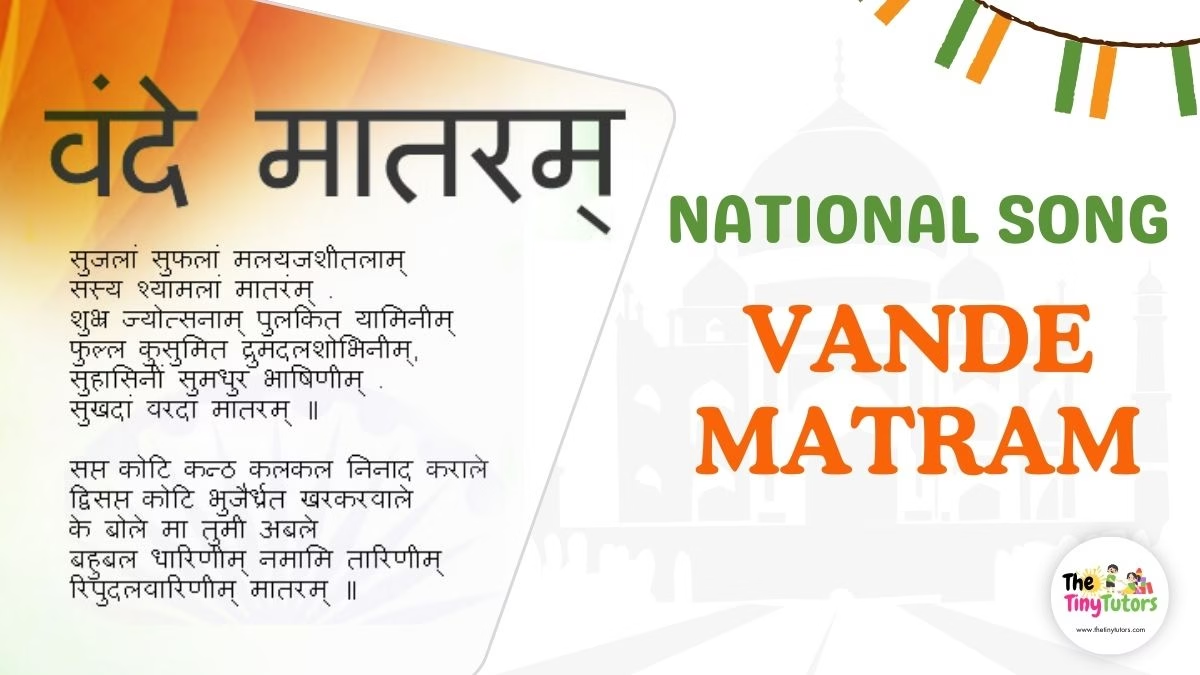
Description: The National Symbols of India
Vande Mataram is India’s national song and was written by Bankim Chandra Chattopadhyay.
What It Means for Us:
The song expresses the love and reverence that Indians have for their country, and it is sung at many national events.
Fun Fact:
The National Symbols of India, including the Vande Mataram song, embody the spirit of unity and patriotism. The Vande Mataram, as a heroic anthem, inspires Indians, transcending barriers. These symbols represent the country’s rich cultural heritage, sovereignty, and collective identity, uniting all Indians under one national pride.
National Motto: Satyameva Jayate
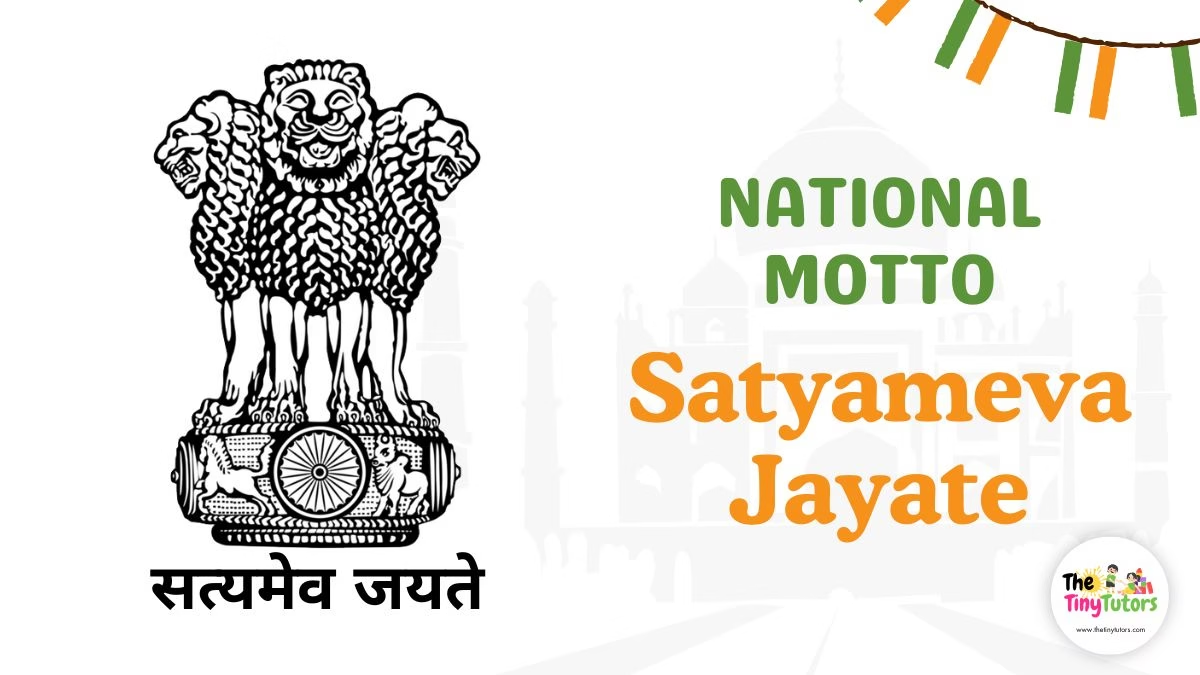
Description: The National Symbols of India
Satyameva Jayate, meaning “Truth Alone Triumphs,” serves as India’s national motto, symbolizing the nation’s commitment to truth, integrity, and justice prevailing above all else.
What It Means for Us:
The national motto represents the importance of truth, justice, and integrity in India’s democracy.
Fun Fact:
The Satyameva Jayate is inscribed on the Indian national emblem and is a reminder of India’s values.
National Tree: The Banyan Tree
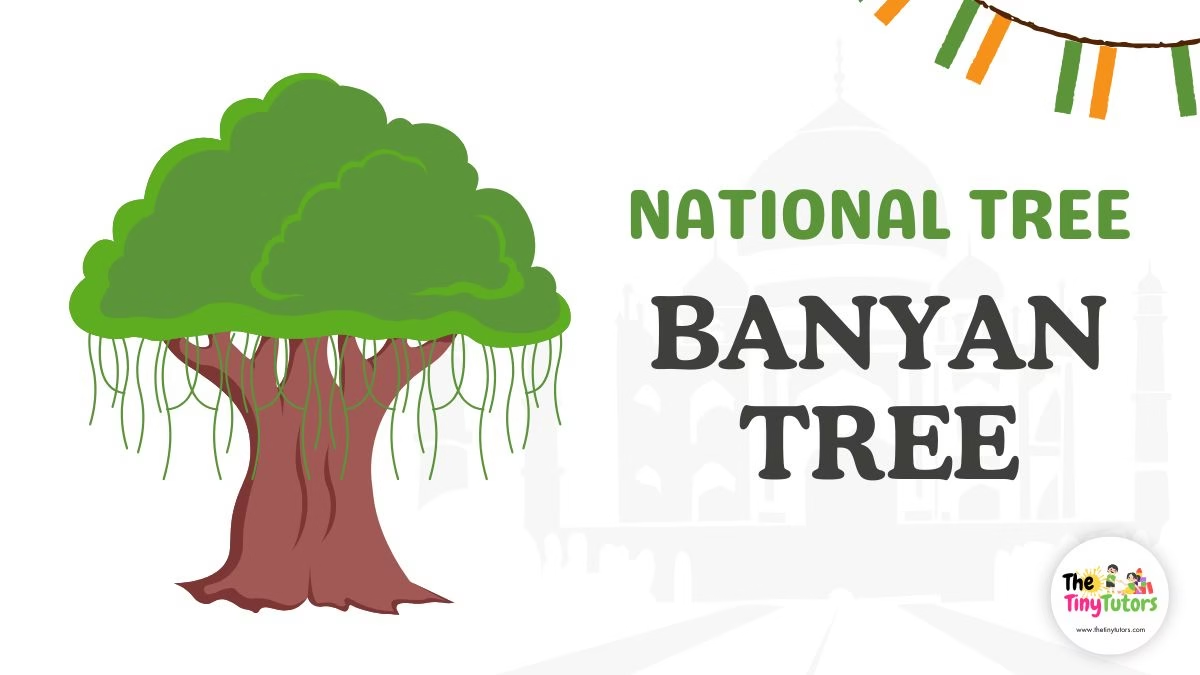
Description: The National Symbols of India
The Banyan tree is India’s national tree, known for its wide canopy and spreading roots.
What It Means for Us:
The Banyan tree symbolizes unity and immortality, as it can live for hundreds of years.
Fun Fact:
The Banyan tree, a remarkable national symbol of India, can grow so large that its branches cover a vast area, while its roots act as magical supports. Just like the national symbols of India, the Banyan tree represents strength, unity, and the deep connection to India’s natural heritage.
National Vegetable: The Pumpkin
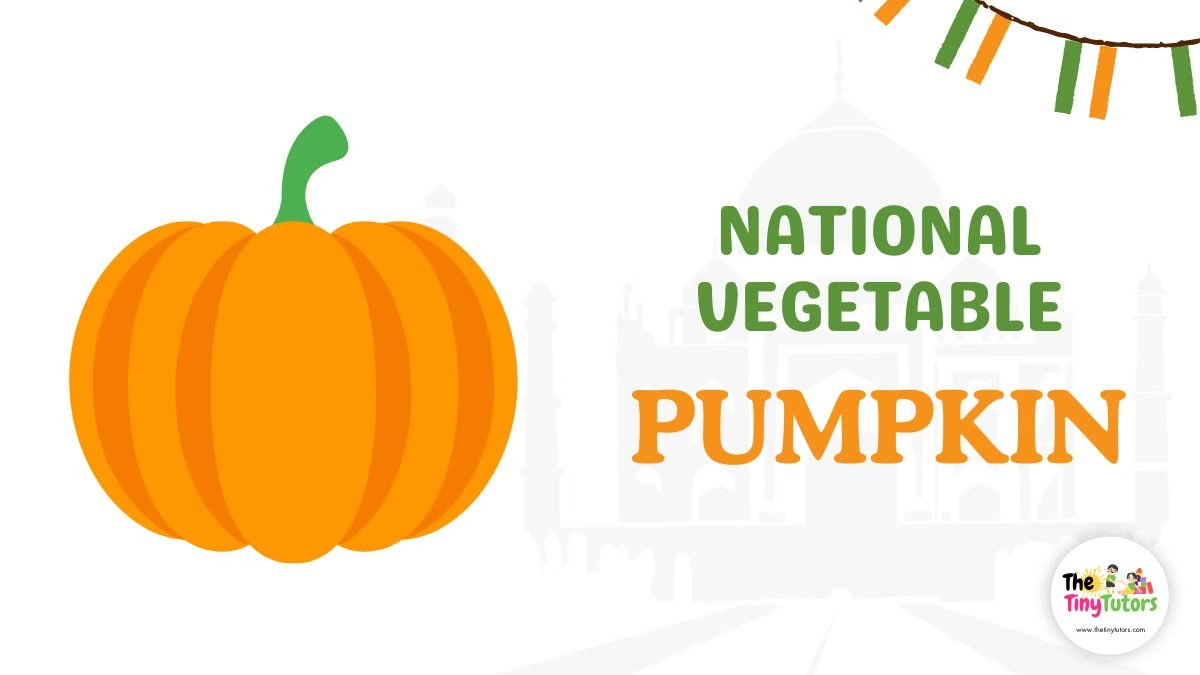
Description: The National Symbols of India
The pumpkin is India’s national vegetable, known for its vibrant orange color and nutritional benefits.
What It Means for Us:
The pumpkin symbolizes the country’s agricultural richness and is used in many traditional dishes.
Fun Fact:
Did you know that pumpkins can grow to weigh more than 100 pounds, making them one of the largest vegetables? Watching these massive pumpkins grow is both exciting and fun! Similar to the national symbols of India, their growth is a super cool and magical process that’s full of wonder!

